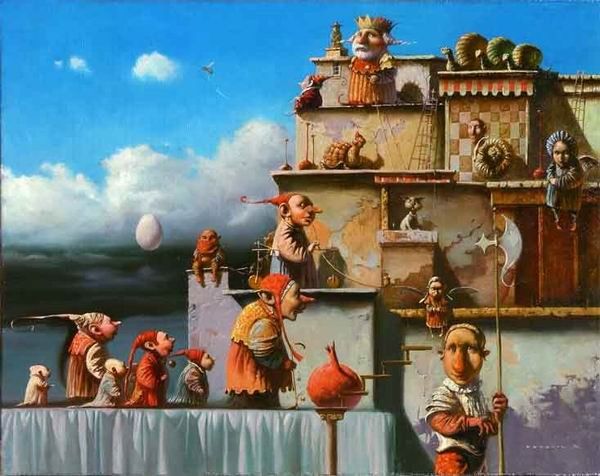
PRINCIPIA SCACCHORUM: A Friendly Invitation for a Debate to All Big Guns of Chess
Where do we begin when teaching chess to a beginner? asks James Stripes in Lesson One on his blog.
Well, it should be the most important thing I would think. Doing the most important thing is always the most important thing. Here is my comment to Lesson One:
James, a great piece. I don’t think anyone has ever presented a review of different approaches to how to start in chess. It would be great if it provoked a broader discussion within chess circles (hopefully including big guns) on this important issue of how to start teaching at Chess Ground Zero.
The problem we are facing is this: people generally don't challenge established dogmas. This has nothing to do with their intelligence, it is simply the way we are indoctrinated to get wired in a certain way. With our minds controlled by media, “fake news,” technology and government, there will be even less attempts to challenge the status quo of anything, never mind some peripheral chess teaching…
In chess, every one of us has started with the moves shown first. A fact indisputable. Ask any living GM and they would tell you the same story. I once asked GM Mark Paragua, when he was on a visit here in Marietta, GA. As any other of his distinguished colleagues who we respect so much for their deep chess knowledge, he fired like: "the moves, centralization,” etc.
And that's okay. Although, it’s always been easier to defend the established order than to dare some big truth (assuming you have identified where the problem lies and have a fix, no one ever thought of before, in mind).
But there is always some Copernicus who starts challenging a never-challenged, never-changing truth of eons. In chess, that Copernicus is Nimzovich.
There is really no need here to say a single word about who he was and what he did for our better understanding of the game that still holds firmly up to date.
Now, if he, one of the greatest chess thinkers of all time, in the same company with Philidor and Dr. Lasker, suggests in his 1929 article that the traditional approach with the moves is really a flop, then there must be something real big in this deal.
The thing is, no one gets what Nimzo wanted to communicate to us.
The British GM Raymond Keene, OBE, in his "Aron Nimzowitsch: A Reappraisal," first published in 1974, then renamed as "Aron Nimzowitsch: Master of Planning" in 1991, even omitted a part from the 1929 "How I became a Grandmaster" article* Nimzovich wrote for Shakhmatny Listok, that is THE most important, actually crucial piece for our understanding of Chess Moment One, the Big Bang from which all our chess experience starts expanding in Space-Time.
Very sadly, for most people, this Big Bang turns into a Big Flop, as 99.5% percent of all people who take up chess at one point in their life never move out of Chess Level One, i.e. beyond the moves.
No matter how impossible it may sound to all of us, THE PRIME SUSPECT appears to be THE MOVES FIRST!
*My translation, for the first time in full in English (though not perfect, as I was using my Serbian native translation engine to do it from Russian to English) was published in The Chess Journalist of America, Vol XL, No4 in Fall 2011. I want to thank immensely again Mark Taylor, Associate Professor of English, in the English Rhetoric and Writing Department at Berry College for his backing of the Square One teaching game changer.
